The special offer from Staedtler has ended. All 175 kits have been claimed. Winners will be notified by the end of today (June 15, 2011).
Thank you to Staedtler for this very generous offer!

pencil talk | pencil reviews and discussion
exploring the art and science of pencils since 2005
The special offer from Staedtler has ended. All 175 kits have been claimed. Winners will be notified by the end of today (June 15, 2011).
Thank you to Staedtler for this very generous offer!

Staedtler kindly sent pencil talk a sample of their new pencilmaker set.
The official product description in English is “7-piece historic pencil kit including instructions,” and the model number is “61 HP KIT”.
Readers of Lexikaliker know that the product was unveiled at the 2011 Paperworld show, and part of a larger series of pencil products with historic themed packaging.
The set contains two carpenter style pencil slats, a rectangular lead, string, glue, a seal, and instructions.
For some years, Staedtler has promoted their brand with employees in historical garb performing pencil making demonstrations. A little online searching reveals that these events are held in many countries.
As well, finished historic appearance pencil products have been packaged, as shown in the first volume of Stationery Magazine.
I am told the best place to observe the rendition of historic pencil making craft is at Nürnberg’s Christkindlmarkt. If you haven’t heard of a Christkindlmarkt, the Guardian has a nice piece on them. There is even one in my own backyard, though I haven’t been to it.
The kit is simple enough that I think it doesn’t need too much explanation. The version I received differs from the one seen at Bleistift and in official photos in that the slats in my version don’t have any markings. i.e. they are not marked “Staedtler”.
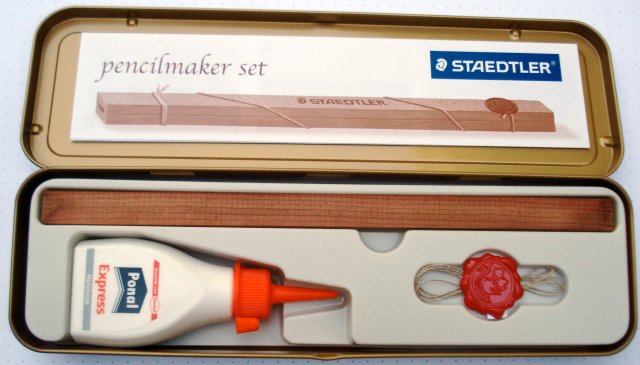
As Joan asked, a key question is – are you going to assemble the pencil and use it, or just keep the set as a memento?
Staedtler sent this sample, but that’s far from all they did. They contacted pencil talk about giving away 175 sets (corresponding to their 175th corporate anniversary) via this blog. I was amazed. Manufacturers have regularly sent items for review or as contest promotions, but never anything at even close to this scale.
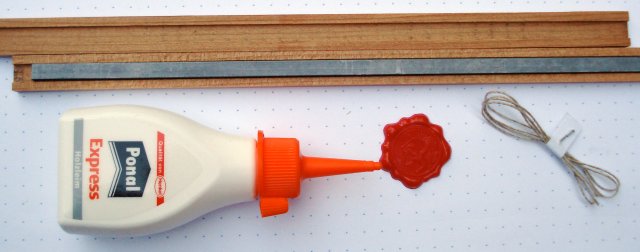
The logistics alone represent a significant expenditure by Staedtler. And it was all done very graciously with just a few coordinating phone calls. The kit fits so well with the interests of pencil talk readers – it is great promotion, and I sincerely thank Staedtler for choosing to reach out this way.
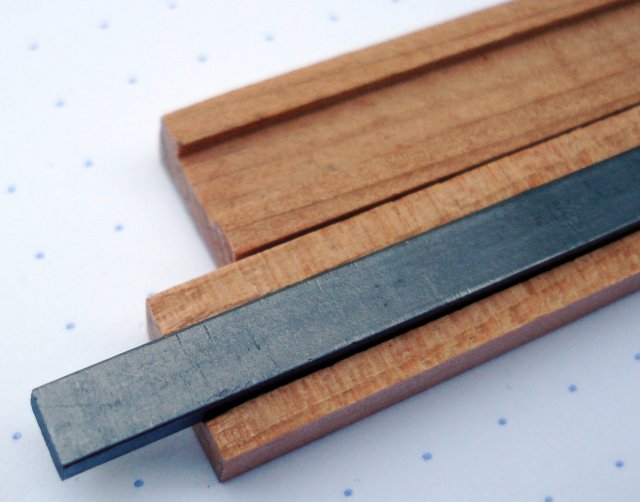
Some further details – the kits are being given away on a first come, first served basis. As of June 3rd, about 75 kits were claimed, and there are still some available as of the 6th. Shipping will not begin until late June, so please allow 4 to 8 weeks for delivery.
To request a free pencilmaker set, see the details in the previous post.
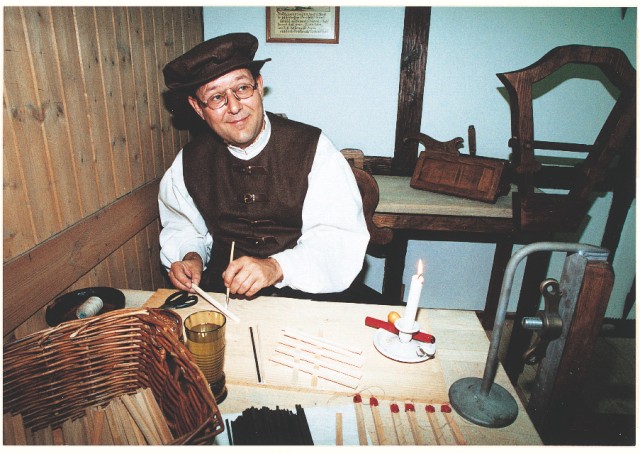
In celebration of the 175th Anniversary of the founding of the JS Staedtler pencil making plant in Nürnberg, we are offering a limited quantity of “Historic Pencil Maker” Kits, free of charge, to Pencil Talk readers. Simply email us, and tell us what you like best about Staedtler pencils and how you use them. Only 175 tins are available to readers in Canada and the USA.
Manufacture your personal historic pencil just like Friedrich Staedtler in former times! The construction kit comes with all necessary materials; wood, lead, glue sealing wax and string. Step-by-step instructions included. Packed in metal tin with historic motif.
This kit is not available at retailers in Canada or the USA.
Email: Advertising@staedtler.ca and tell us why you should have one to add to your collection.
Please allow 4-8 weeks for delivery.
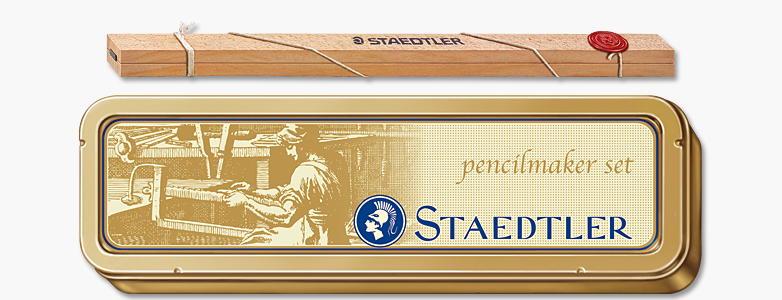
[Update]
The special offer from Staedtler has ended. All 175 kits have been claimed. Winners will be notified by the end of today (June 15, 2011).
Thank you to Staedtler for this very generous offer!
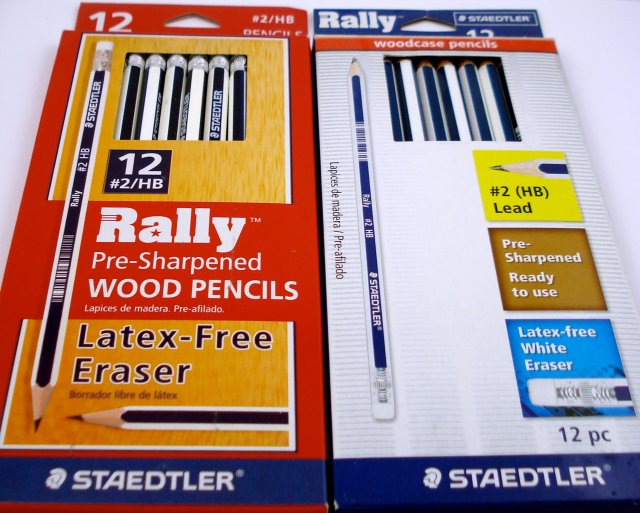
“Made of wood.” “Pre-sharpened.” If those were the only selling points, one would really have to wonder. But these pencils come from Staedtler, so the expectations are higher.
The Rally seems to come from an alternate Staedtler universe, with different centres of production. I’m not sure if the two versions represent different generations or not.
 |
 |
There is also a “Cadet”, which is available online.

The Rally is mentioned by Staedtler at their website. My guess is that it is a discount school pencil meant to compete with other discount school pencils.

Have you used or seen this pencil?
Pencil manufacturers have been receiving some major media attention recently.
Behind the scenes, I would guess that Faber-Castell’s capable public relations staff have been very active. Faber-Castell’s 250th anniversary is next year, and the celebrations are starting. See this YouTube video for a behind the scenes view of how the “250” human logo was formed and photographed.
An article in the Wall Street Journal suggests some local tensions in Nürnberg, with a friendly rivalry between Faber-Castell and Staedtler. The article mentions a 1995 lawsuit against Staedtler regarding Staedtler’s previous claim to have originated with their namesake Friedrich Staedtler in 1662, rather than J. S. Staedtler’s company founding in 1835.
Speaking of Friedrich Staedtler, a Nürnberg school was recently renamed in his honour.
There was also an article on Faber-Castell in the Economist, a periodical we’ve previously mentioned for their coverage of the pencil industry.
The Economist mentions a different lawsuit, a century earlier. There seems to be a thread between the past and present – the Faber company has long appreciated a good court battle. This case is the overturning of the Hyman erser patent in the US Supreme Court in 1875. I learned about this at The IPKat blog.
The ruling by Mr. Justice Hunt can be found here. I love the careful language, and daresay it is one of the finest contemplations of a pencil’s function that will be found. The ruling’s conclusion:
In the case we are considering, the parts claimed to make a combination are distinct and disconnected. Not only is there no new result, but no joint operation. When the lead is used, it performs the same operation and in the same manner as it would do if there were no rubber at the other end of the pencil; when the rubber is used, it is in the same manner and performs the same duty as if the lead were not in the same pencil. A pencil is laid down and a rubber is taken up, the one to write, the other to erase; a pencil is turned over to erase with, or an eraser is turned over to write with. The principle is the same in both instances. It may be more convenient to have the two instruments on one rod than on two. There may be a security against the absence of the tools of an artist or mechanic from the fact that the greater the number, the greater the danger of loss. It may be more convenient to turn over the different ends of the same stick than to lay down one stick and take up another. This, however, is not invention within the patent law, as the authorities cited fully show. There is no relation between the instruments in the performance of their several functions, and no reciprocal action, no parts used in common.
We are of the opinion that for the reasons given, neither the patent of Lipman nor the improvement of Reckendorfer can be sustained, and that the judgment of the circuit court dismissing the bill must be affirmed.
From the product side, we are still waiting to see what Faber-Castell’s 250th anniversary may bring. There does appear to be a limited edition case of art supplies in the market. (Search for “Alexander Vethers” to see a similar limited edition.)
This eBay seller is kind enough to enumerate the contents: hundreds of pencils, pastels, and other supplies – a complete set of Faber-Castell’s top tier of art supplies. The price (€1250 – about $US1725) is actually in line with what one might pay for these items individually.
There is no doubt more to come in 2011, and I’ll admit that I am hoping for something special in the lead pencil category. I also notice no official press release for this first anniversary offering – Faber-Castell is letting their vendors get the buzz, which sounds like a smart strategy to me.
~~~~~~~~~~
My thanks to David O., via a blog comment, and John, via an email, for mentioning one or more of these news stories.
The predecessor of Staedtler’s iconic Mars Lumograph 100 is the Mars Lumograph 2886. According to leadholder.com, this particular box may date from the late 1950s.
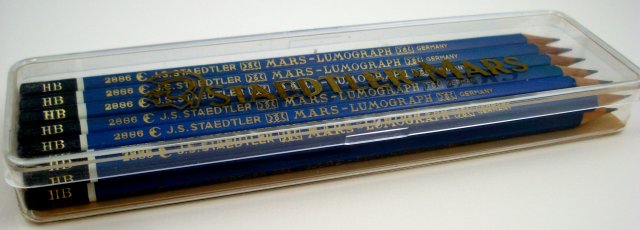
The lid has some compelling graphics:
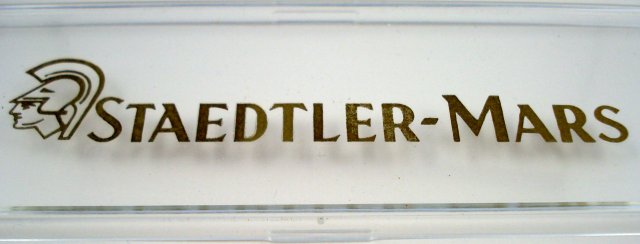
Half a century old, only the design indicates the age of these pencils:

The “A” in “STAEDTLER” appears to be formed like a compass. As well, reflecting the manufacturing processes of the era, there are slight surface differences between specimens.
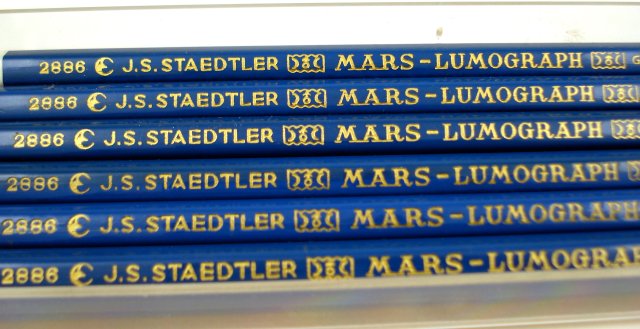
An element I love is the HB grade mark in vibrant gold colour. It is serious but not fanciful, like the painted gold markings that were once typically applied to wood surfaces such as office doors and library card catalogues.
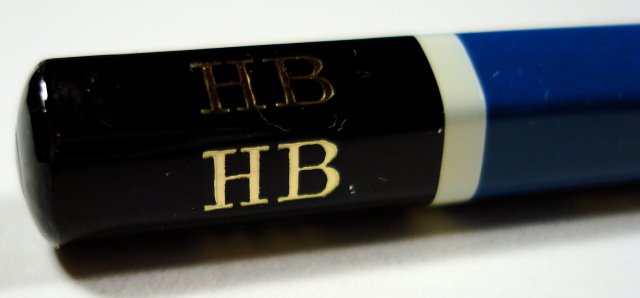
The factory sharpening, just like the modern version, is the best in the industry, with no “scrape marks” along the wood.
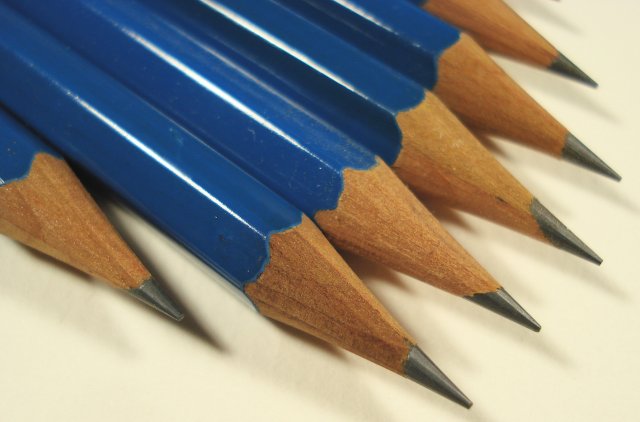
Take a close look. Even the smallest graphical details are impressive.

Overall, a classic pencil.
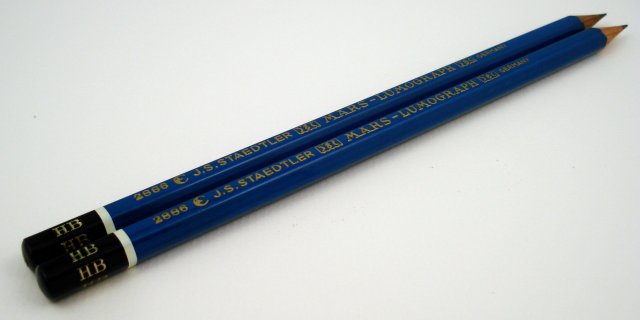
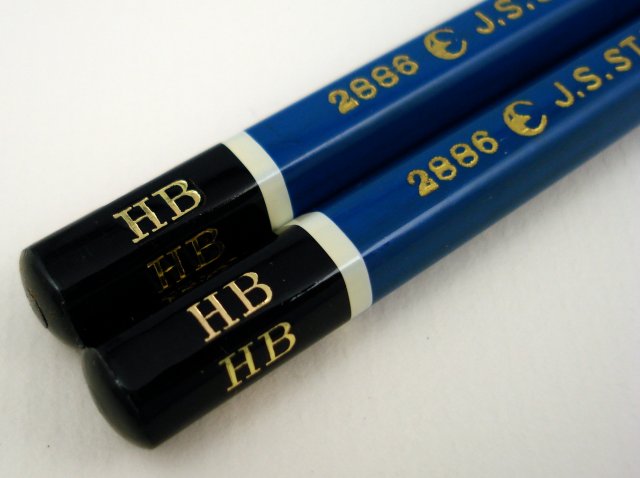
Are “MARS” and “LUMOGRAPH” rendered the same way?

For me, the caps are a continuing delight:

A comparison with the modern version. In case you didn’t notice, this photo should make clear that the 2886 is a “left-handed” imprint, in contrast with the standard “right-handed” 100.

Does anyone prefer the modern look?

A small delight after all these years is to find a paper insert.

Slightly withered, it presents pencil grade recommendations for eleven different professions.
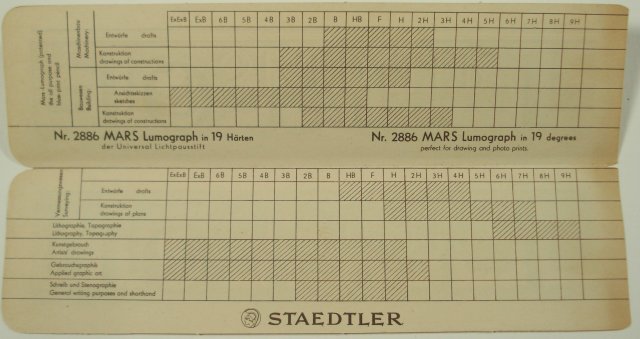
I have tried and tested the 2886, and find it to be extremely similar to the modern 100 in graphite function and erasure. Given the half century between the manufacture of the two pencils, this demonstration of Staedtler’s ongoing commitment to their product excellence is remarkable.